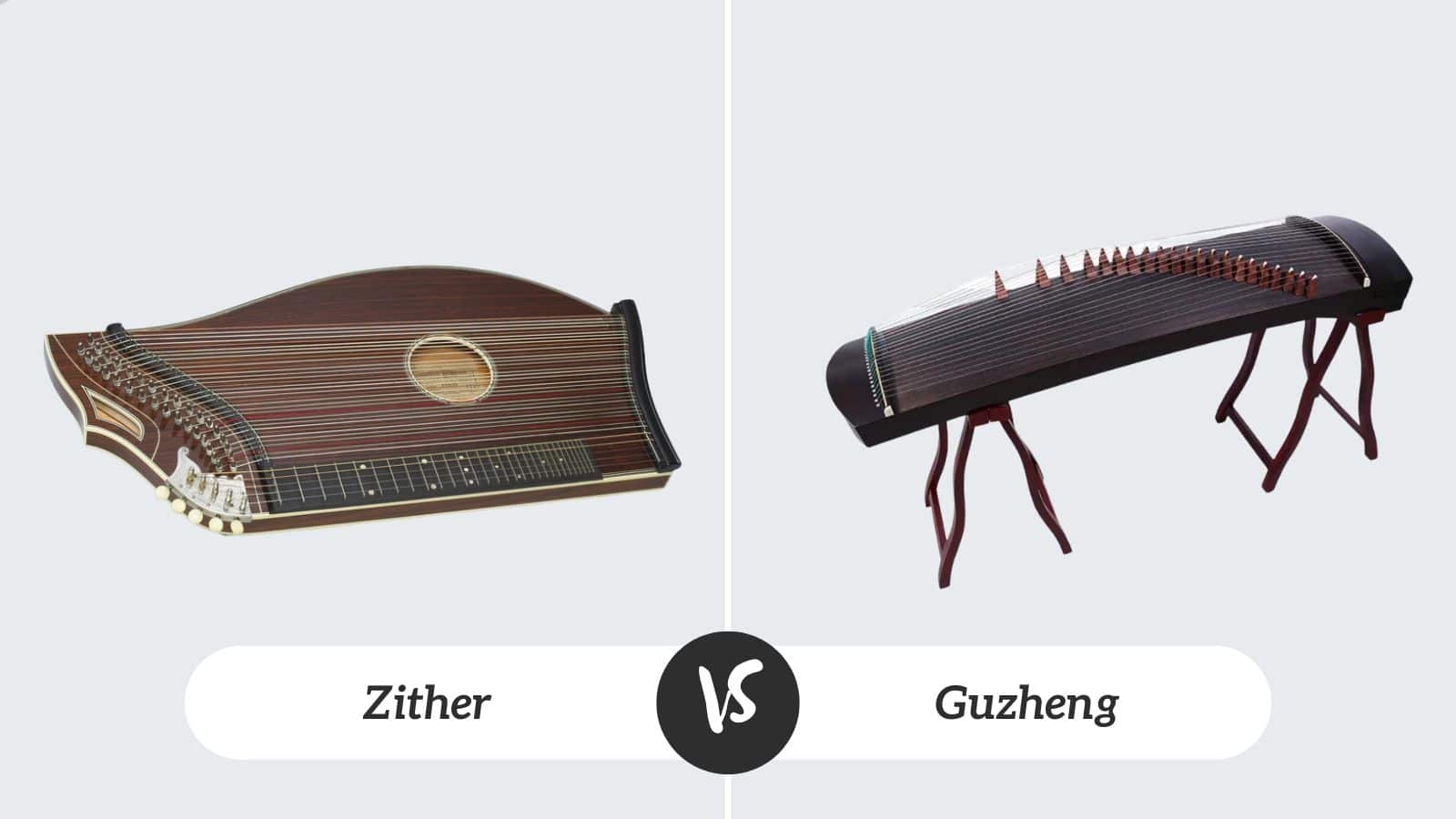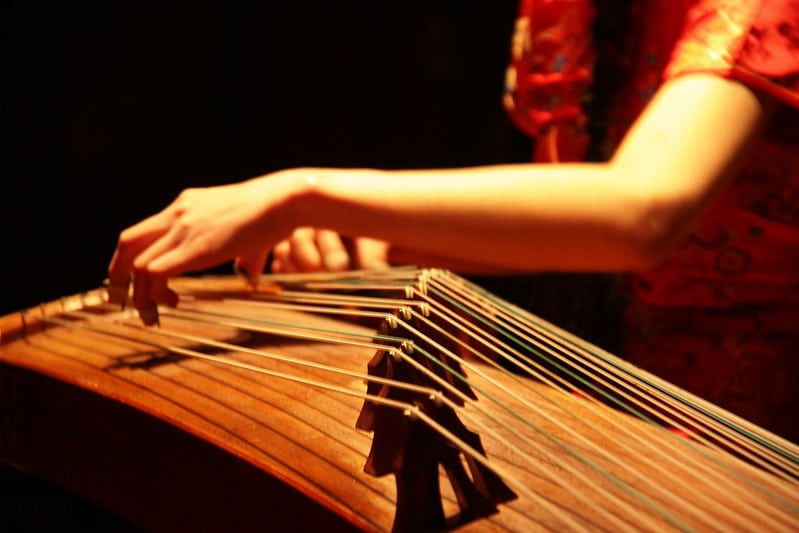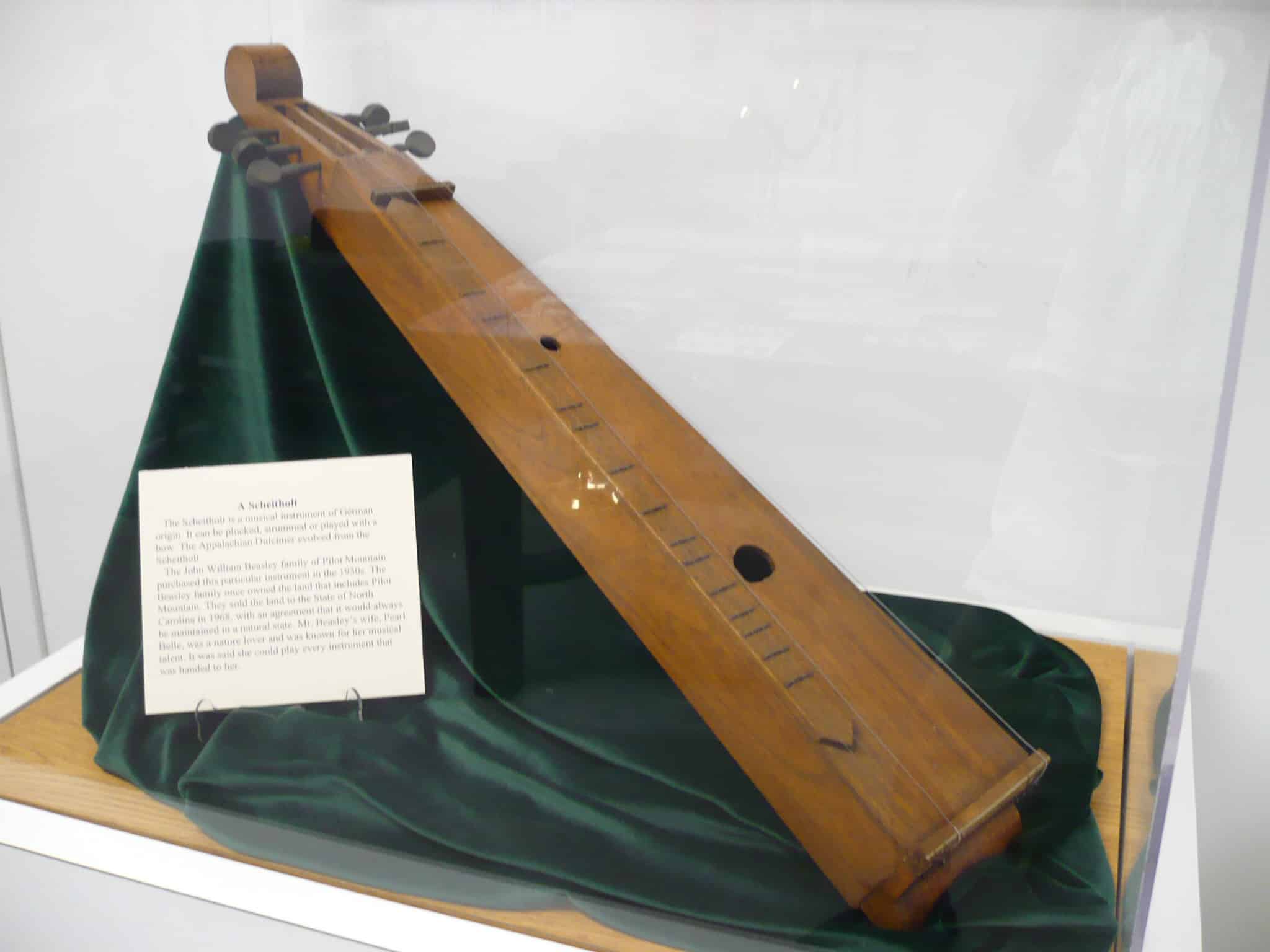
Before we can hope to unravel the mysteries contained in this thought-provoking title, let’s take a moment to explore each instrument in turn. From this vantage point, the comparison of the two instruments may be a more enlightening experience.
Zither vs Guzheng
Confusingly enough the Chinese guzheng is frequently referred to, in English, as simply the Chines Zither.
If we delve a little deeper it turns out this beautiful instrument also goes by several other names including, the Hanzheng, the Yaozheng, the Quinzheng and the Luanzheng.
The guzheng is one of the most important instruments in China. Like many celebrated national instruments, the guzheng is very old with its roots stretching back over two and half thousand years. Its exact origins are unknown but much speculation surrounds the guzheng.
Of the many stories that offer explanations as to the beginnings of the guzheng the one I find most appealing, and even most probable is this one. Can you imagine that this stunning instrument had its birth as a weapon of war? That is one side of the discussion.
The story runs that originally this weapon was without strings. These were added later. When these strings were plucked the sound was pleasing, and so what was once a tool of destruction transformed into an instrument of pleasure and creation.
As a guiding set of measurements, today’s guzheng is around 1.63 meters long and has a total of twenty-one strings. These strings are arranged over a rectangular wooden sound box that acts as a resonator for the strings in a similar way to an acoustic guitar.
Commonly, the first choice of wood for a guzheng is paulownia from Lankao, in Henan. With a frame constructed of white pine, the side panels along with the ‘tail’ and side panels are usually constructed from redwood or even Burmese rosewood.
Whilst tunings vary according to region, the traditional tuning of the strings is close to a pentatonic scale. Today these strings are made of steel or brass wound wire but over the lengthy history of the guzheng, they have been made from silk and brass.
You will often find that the guzheng is finely decorated using inlays, painting and carving giving the instrument a unique appearance that frequently reflects the people who created the instrument.
The number of strings on a guzheng has changed considerably over the evolution of the instrument. One of the first zithers was thought to have as many as thirty-eight strings.
Fifteen strings were the most common number during the Ming and Qing dynasties while the sixteen-string version was more popular as the Republic of China began.
By the late 1940s, the shape and style of the guzheng we are familiar with today were firmly established. This was the twenty-one-string guzheng.
The guzheng is played using either finger, fingernails, or a plectrum. Again, the parallels with the acoustic guitar. The use of plectrums in performance these days is the preferred method of creating sound.
Attached to the four fingers on each hand the player can play using a variety of techniques. In most cases, the right hand plucks the string whilst the left hand creates changes in pitch, slides, vibrato, and even harmonics.
Another commonly heard sound is the tremolo that is produced when the player’s right thumb swiftly rotates around a single pitch. Many other playing techniques originate from different regions of China and Mongolia that you can listen to on contemporary recordings.
In contrast to the guzheng, we have the humble zither to consider. According to ‘Britannica’ online, a zither refers to any “stringed musical instrument whose strings are the same length as its soundboard”.
Similar to the guzheng, the origins of this instrument are lost in the mists of time. What we do know is that this type of instrument was extremely common across Europe, India and Africa.
One of the more ancient types of zither is the Alpine Scheitholt. This instrument has considerably fewer strings than its contemporary successor and a quite narrow, rectangular soundbox.
On some of these instruments, there are at least three bass strings that are used to produce a drone. These instruments have been found as far back as the early 16th century in places as far apart as Sweden and Romania.
In just the same way as the guzheng is played, regardless of the number of strings, the right hand plucks the strings as the left stops them, or uses various techniques to alter the sound.
The zither is not a freestanding instrument like the guzheng that majestically curves its rectangular body into a stand. The zither is played as it rests across the performer’s lap or if more comfortable, on a small table.
It seems, according to various articles, that Austria took the zither to its heart and helped to develop the instrument. This instrumental evolution took place in the 18th century in the city of Salzburg.
The zither that became popular there had a rounded side that faced away from the performer with up to five strings dedicated to melody and some twenty-nine strings for accompaniment.
Tuning for the Salzburg zither varied from melody strings of, a,d,g,g (an octave higher) and c to other more suitable options for the music being played.
These instruments were capable of chromatic harmony which was a departure from the guzheng. In addition, there was the Mittenwald zither. This distinguished itself from the Salzburg zither in that both of its side panels were rounded.
Looking further afield the family of zithers includes almost every conceivable variety. If we allow ourselves for a moment to reduce the zither to a string or set of strings stretched across a resonating box, then many instruments begin to join the family.
Some African zithers are made from a single thin pole with a resonator towards the bottom and a single string. This variety is commonly thought of as a monochord zither.
Whilst the zither is an openly generic noun for a world of different stringed instruments with resonators or sound boxes, the guzheng refers specifically to a certain Chinese instrument. The guzheng then is a zither but not all zithers are guzhengs.


